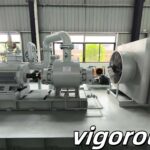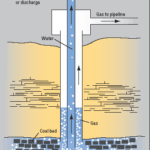In long-distance oil pipeline transportation, screw pumps (especially twin screw types) offer significant technical and economic benefits over centrifugal pumps. This analysis covers efficiency, energy use, maintenance, and adaptability in key areas:
I. Efficiency and Energy Consumption: Screw Pumps Lead
Twin screw pumps show 20% higher efficiency than centrifugal pumps on average. Their design uses screw meshing and precise clearances for stable flow, minimizing energy loss. Centrifugal pumps rely on high-speed impellers, which waste energy with fluid changes. For example, a 10-million-ton pipeline can save millions annually in electricity costs.
II. Maintenance Costs: Screw Pumps Shine
(1) Modular Design Cuts Downtime
Vigesh twin screw pumps use modular designs for quick repairs. Professional tooling allows 4-6 hour fixes, versus 24+ hours for centrifugal pumps. This reduces monthly shutdown losses by hundreds of thousands of yuan.
(2) Spare Parts and Wear: Lower Costs
Single screw pumps need frequent rubber stator replacements, with long NETZSCH spare part lead times. Twin screw pumps have no rubber parts. Vigesh models use alloy coatings for wear resistance, cutting maintenance costs by 50-67%. In sandy oil projects, single screws need monthly stator changes, while twins last six months between checks.
III. Cold and High-Viscosity Adaptability
In cold regions, oil viscosity rises, requiring costly heating. Twin screw pumps handle high viscosity via precision clearances and sealed profiles. In -30℃ areas like the Sino-Russian Pipeline, they maintain flow without heavy heating, saving 30-50% on energy costs yearly.
IV. Data Comparison
| Pump Type | Efficiency (%) | Downtime (%) | Annual Savings (¥10k) |
|---|---|---|---|
| Twin Screw | 70 | 20 | 450 |
| Single Screw | 55 | 40 | 10 |
| Gear Pump | 58 | 38 | 20 |
| Multi-stage Centrifugal | 50 | 55 | 10 |
Twin screw pumps top efficiency charts, with 1/3 the downtime of centrifugals and 45x more annual savings.
Conclusion
Twin screw pumps outperform in efficiency, costs, and harsh conditions. Ideal for high-viscosity and cold environments, they boost pipeline economy and reliability, driving industry efficiency forward.



